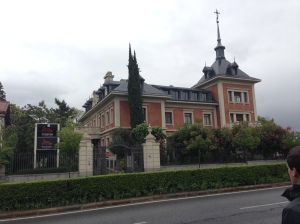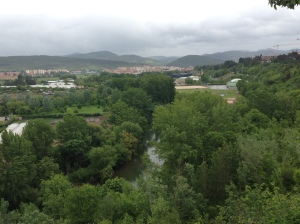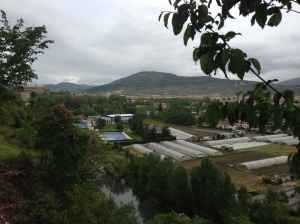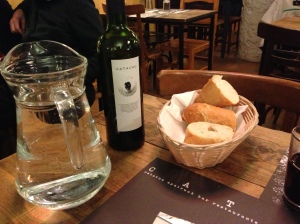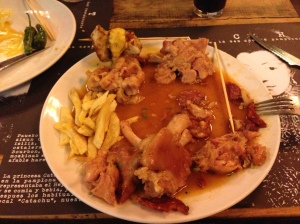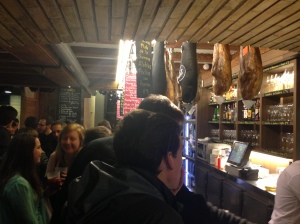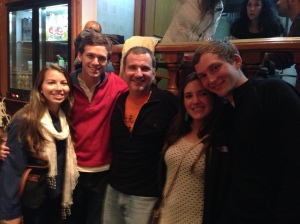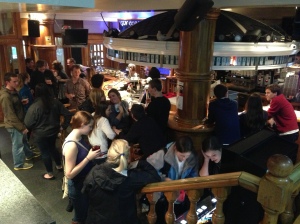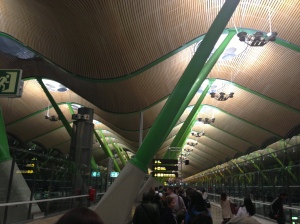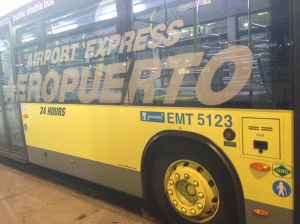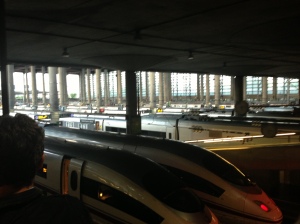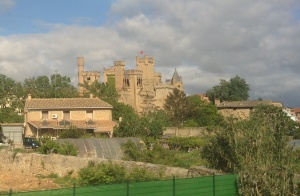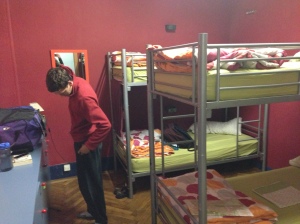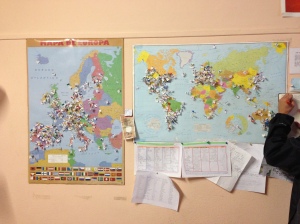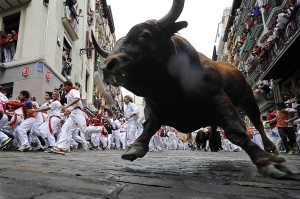So I guess I did get busy–but I didn’t forget about the blog. It’s been a while since I’ve written but I’ll try to catch up on the last two weeks. I definitely won’t remember to include everything, but I consider that a blessing given the amount of time it takes me to write one of these posts.
First off, school. We start class at 9:00 every morning after a 30-minute commute via bus and foot across town. Our bus is timed such that we arrive on time only if we make all of the stoplights en route. Thus far, that’s only happened once so we have decided to start riding the earlier bus.
When we do finally get there, class lasts until 2:15 with a short 5-minute break every hour and a 30-minute break starting at 10:50. A typical school day is divided into three classes: two hours with Katia, two hours with Jorge, and one hour with Gemma. I believe the first two classes are supposed to be divided into vocabulary and grammar, but my group (elementary) knows so little Spanish that they end up running together. The third is an ‘engineering’ class where we learn vocabulary pertaining to engineering, energy, and business. These classes are taught almost exclusively in Spanish–some of the teachers don’t actually know (much) English. They call it ‘immersion’ and from what I can tell it’s working pretty well. When I got here, I could understand NOTHING and say even less. Two weeks later, I’m constructing basic sentences, my vocabulary has expanded exponentially, and I can understand much of what is said around me. Albeit I have a long way to go, but we will take a test in the coming week to determine what we have learned and whether we are ready for the next level. I’ve got a feeling I’ll move up, as will most (if not all) of my class.
Our program includes engineering students from Alabama and Clemson, and business and nursing students from Auburn. We spend a lot of time together and go almost everywhere as a group, usually no smaller than four or five. I think we all enjoy being able to speak English to one another, and usually there is someone in the group who knows enough Spanish to communicate for all of us. We eat lunch twice a week with all of the students in our program in the restaurant below the school. The food here is hit or miss, and we always have two menu options for each day. We also take a school-sponsored exhibition at least once a week that includes the entire program (except Clemson students) and a few of our instructors. On the Saturday of our first week we visited San Sebastian on the northern coast of Spain. I elected to spend an extra day there with Arik and some friends and we had an incredible time–more on that later, when I have time to post about the trip specifically.
After school, we will usually eat lunch (around 2:30) and hang around the old city in a bar until around 6:00. After that, we head home for a siesta or homework, then eat dinner with our host family around 9:00. Thus far, we have yet to explore much of the city. The weather has been dreadful, and the locals say it is unusual for this time of year. The temperature on an average day reaches a high around 55, and it’s typically overcast. On top of that, it’s usually misty or rainy with a brisk wind that rarely dies. The cold damp days keep us from wandering too far from home but we have managed to see much of the old city and find some excellent restaurants. The weather is expected to clear up a bit in the next few days (the third week, finally) and we’re really looking forward to enjoying some of Pamplona’s many beautiful parks.
A few nights a week, (Tuesdays, Thursdays, and weekends) we meet as a large group in the old city and move from bar to bar enjoying local wines and conversation. Sometimes we end up in a more club-like bar for dancing and more drinking. Spaniards will sometimes stay out until 7:00 or 8:00 am, while we typically make it home around 3:00 or 4:00. On days that we plan to go out we will usually take a siesta in the afternoon, so even on these late nights it’s not very difficult to make it to school and participate in class the next day. Since our arrival I’ve discovered that I like gin and tonic, which has become a very popular drink in this area. There is no open container law here, and the streets of the old city are often crowded late at night with people enjoying wine, beer, and mixed drinks. The locals are typically friendly and we’ve met people from all over Europe while out on the town.
